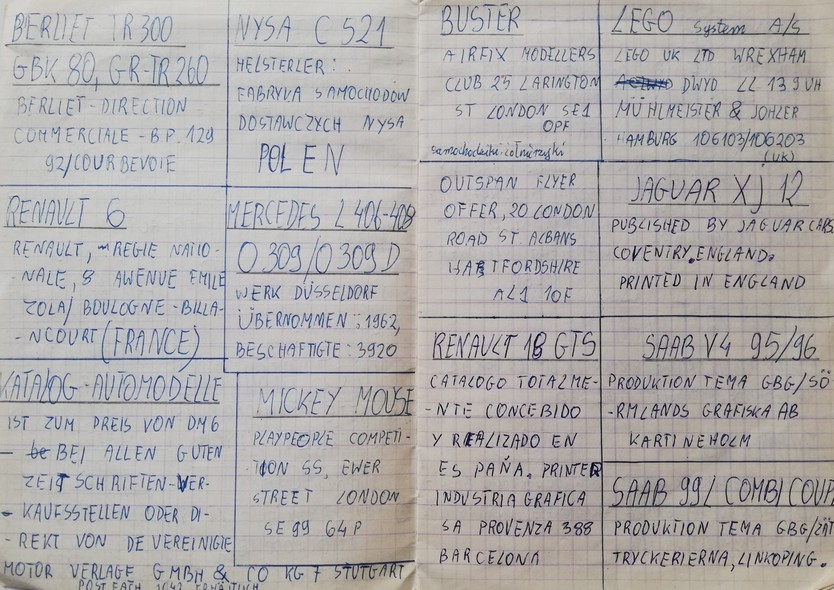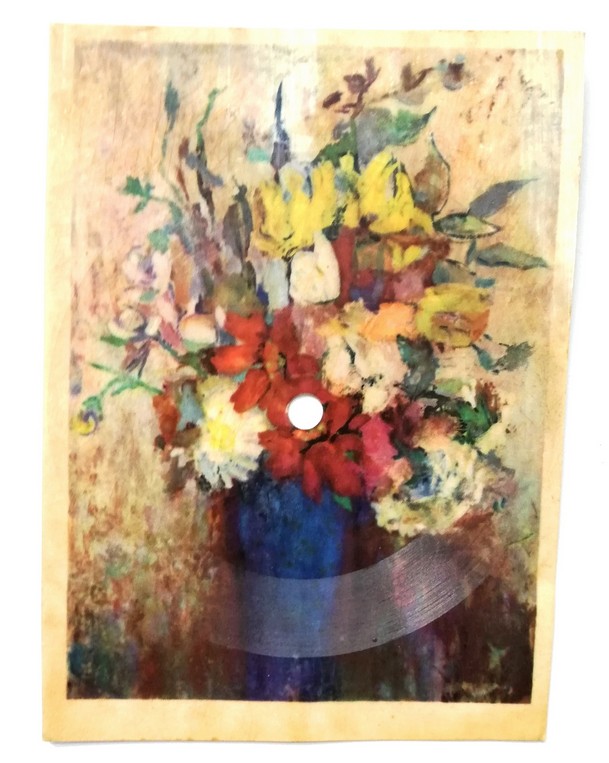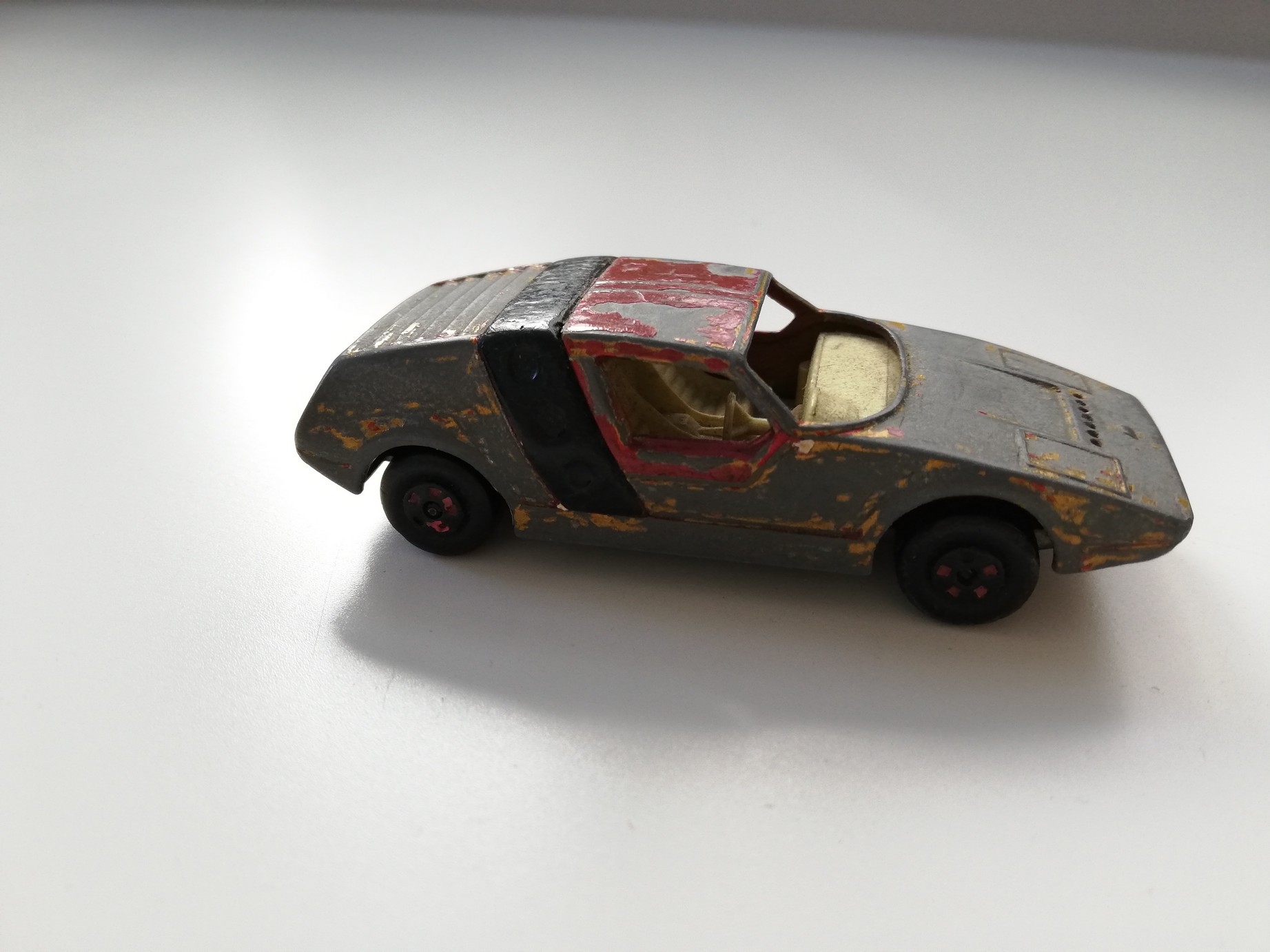★ Spare time
How did people use to spend their spare time in the Old Suburb? Here are some ways remembered by the inhabitants, based on some memorabilia and materials collected by the Society of the Storytellers of the Lower Town of Gdańsk.
- Bottle caps game. A game which was very popular with children. Frequently it imitated the Peace Race (a bicycle race). Bottle caps belonged to different cyclists but very often they were identical. To make them look differently, various state flags were cut out of paper and stuck on the caps.
- Matchbox cars. Being an owner of a matchbox car was a dream for many boys at that time. Matchbox cars could be bought at a market place or at a Pewex shop (an internal export company). Buying such a toy was a real treat. If you could not afford it, you could try to get a car catalogue. Car catalogues were sent by foreign companies. To get such a catalogue, it was necessary to send a request in English, in which you stated that you were a Polish enthusiast of motorisation and you would like to get a catalogue. Children used to rewrite such letters from each other, making a lot of mistakes. As a result, grammar correctness was poor and the message was sometimes difficult to understand.
- Collecting chewing gum stickers with Donald Duck.
- Collecting sticker albums. They were very popular in the 1970s and 1980s. It was possible to buy them at a newsagent’s. There was only one newsagent’s booth at Embankment Square. Children used to buy albums with empty spaces for stickers. Such albums were, in fact, mini-encyclopaedias because they referred to various fields of knowledge, for example: nature, history, geography. Stickers were sold in packages – 6 stickers in each package. Four of them belonged to one collection and two remaining ones were from other collections. Children used to exchange stickers among themselves to complete their album collections. There was not anything worse than an album with two or three stickers still missing. Newsagent’s booths offered various sticker packages, so children used to hunt for desired stickers all over Gdańsk.
- Philately. Collecting post stamps was also very popular after the war. Stamp albums were passed from generation to generation. Stamps were collected by themes, states, shapes, etc. A package of post stamps would make a perfect Christmas gift. Stamps were purchased at philatelic shops, newsagent’s booths, they were unstuck from postcards and envelopes by soaking in water or steaming over a pot. Sometimes corners were damaged during such operations. Such defective stamps were referred to as „cancers”. Children used to exchange stamps. The most beautiful and desired stamps were the most colourful ones.
- Collecting sound postcards. It was possible to buy them at the market place at Chmielna St. On one side of a sound postcard one or two pieces were recorded and it was possible to listen to them on a record player. On the other side there was some space for writing a text, an address and for sticking a post stamp. It was also possible to record your greetings on sound postcards.
- Do it yourself. Making various objects, such as kaleidoscopes or binoculars, from materials available at home, following instructions provided, among others, in books by Adam Słodowy.
- Reading magazines. A lot of young people used to buy newspapers and magazines to get colourful pictures and posters featuring actors or pop stars. At the end of Świat Młodych (a newspaper) there used to be a comic strip entitled Tytus, Romek and Atomek. Every weekday it was possible to read articles on various subjects. On Tuesdays Świat Młodych provided articles about actors, fashion and astronomy. On Thursdays you could read about motorisation, nature and jokes. On Saturdays there were articles about music and some puzzles to solve. In the 1980s a German magazine Bravo became highly popular. It was very difficult to get. You could buy it at a market place or from someone who brought it from Germany. Some pages or posters featuring actors taken out from Bravo and put into plastic covers were often sold at market places.
- Spending spare time with your friends at the courtyard. Courtyards were the places where neighbours used to meet, to socialise, to organise weddings, to enjoy a meal together, to send children to play. Courtyards were also the places were some domestic animals were kept: hens, turkeys, pigeons or pigs.
































